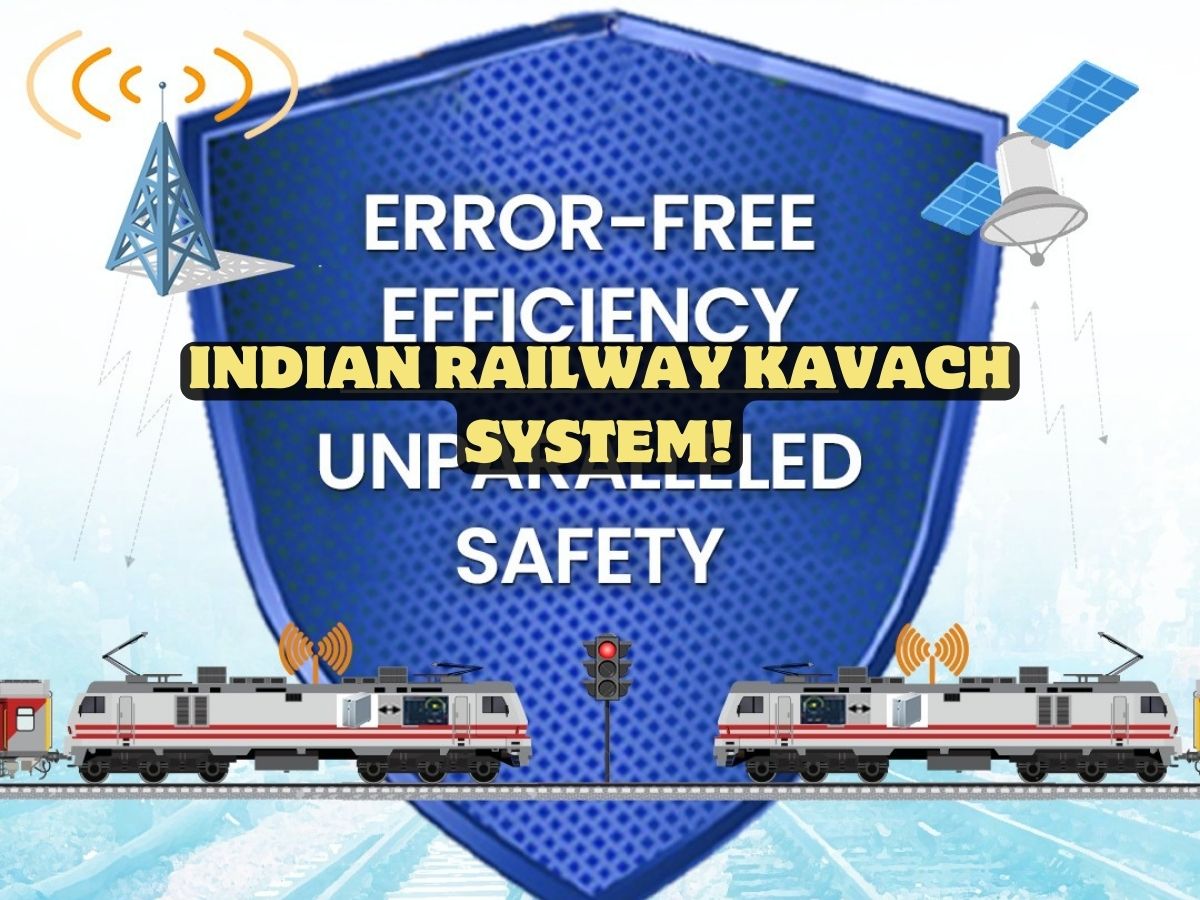Table of Contents
Railway Minister Ashwini Vaishnaw recently highlighted the significant strides made in implementing the Kavach system across the Indian rail network. Here’s an in-depth look into the progress and significance of this groundbreaking safety initiative:
Introduction to the Kavach System
The Kavach system, developed by the Research Designs and Standards Organisation (RDSO) in collaboration with private entities, serves as a crucial safety measure for the Indian Railways. It functions as an automatic train protection system, applying brakes automatically in emergency situations when a train driver fails to respond promptly.
What Is Indian Railways Kavach Technology?
Indian Railway Kavach System: The Kavach system is a state-of-the-art electronic marvel, boasting Safety Integrity Level-4 (SIL-4) standards. Its primary objective is to avert potential disasters by preventing trains from passing signals at Red, a clear indication of danger. By automatically activating the train’s braking system in response to overspeeding or signal violations, Kavach serves as a vigilant guardian of railway safety.
Moreover, the system is engineered to prevent collisions between locomotives equipped with functional Kavach systems, mitigating the risk of catastrophic accidents on the tracks. During emergency situations, Kavach also relays crucial SoS messages, ensuring swift response and assistance when needed most.
You can also read: Amrit Bharat Station Scheme: Transforming Railway Infrastructure, 1318 Stations Identified For Redevelopment!!
An integral feature of the Kavach system is its centralised live monitoring functionality through the Network Monitor System. This cutting-edge feature empowers railway authorities with real-time insights into train movements, enabling proactive intervention and response to potential safety threats.
One of Kavach’s most remarkable attributes is its unparalleled reliability coupled with cost-effectiveness. As one of the most affordable SIL-4 certified technologies available, Kavach boasts a staggering probability of error, estimated at 1 in 10,000 years. This level of reliability underscores its suitability for safeguarding the lives of millions of passengers traversing the vast Indian Railways network.
Indian Railway Kavach System Progress Update
Vaishnaw emphasized the Indian Railways’ commitment to enhancing operational safety by implementing the Kavach system throughout its network. The system comprises five key components: optical fibre work, Kavach towers, data centres at stations, trackside equipment, and loco Kavach.
You can also read: Monkey Man Trailer Unveiled: Sobhita Dhulipala Ventures into Hollywood with Dev Patel’s Revenge Saga!
Providing a progress update, Vaishnaw highlighted significant achievements:
- Optical Fibre and Towers: By December 2023, 3,040 kilometers of optical fibre cables were laid, accompanied by the installation of 269 Kavach towers.
- Data Centers and Trackside Equipment: Data centers are operational at 186 stations, and trackside equipment has been installed along 827 kilometers of routes.
- Loco Kavach: 170 locomotives have been fitted with the Loco Kavach system.
Significance of Kavach System
Vaishnaw underscored the pivotal role of the Kavach system in ensuring passenger safety. Despite worldwide usage of automatic train protection systems since the 1990s, India had previously lagged in implementing such safety measures. However, with the approval and certification of Kavach, Indian Railways has prioritized its deployment.
You can also read: PM YASASVI Scheme 2024: Empowering Students with Scholarships!
Despite challenges posed by the COVID-19 pandemic, the government remained committed to accelerating the implementation of the Kavach system from 2021 onwards, underscoring its dedication to enhancing railway safety and efficiency.
Kavach System Installation: Utilization of Funds and Ongoing Work
Indian Railway Kavach System: The Indian Railways has utilized over 40% of the allocated budget for Kavach installation in the fiscal year 2023-24. Notably, the anti-collision device has been deployed on 1,465 kilometers of tracks and 139 locomotives, with ongoing work on the Delhi–Mumbai and Delhi–Howrah corridors.
Responding to queries in the Rajya Sabha, Vaishnaw highlighted the indigenously developed nature of Kavach, its technological complexity, and the rigorous safety certification process it undergoes. He also provided details on the ongoing work, including tenders awarded for major corridors and the installation progress.
You can also read: NPS New Partial Withdrawal Rules 2024: From Feb 1, Partial Withdrawal Allowed, Check Process, Eligibility!!
Conclusion
The Kavach system represents a pivotal leap forward in enhancing safety standards across the Indian rail network. With meticulous planning, technological innovation, and unwavering commitment, the Indian Railways aims to ensure the seamless implementation of Kavach, safeguarding passengers and bolstering operational efficiency. As the initiative progresses, it promises to redefine safety norms and pave the way for a more secure and efficient railway ecosystem.


The articles you write help me a lot and I like the topic